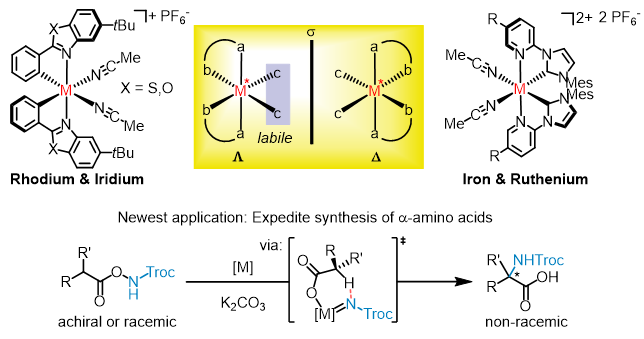

 报告人:Prof. Eric Meggers University of Marburg (Germany)
报告人:Prof. Eric Meggers University of Marburg (Germany)
时 间:2023年5月29日(星期一)16:15~17:30
地 点:张江校区6号楼二楼宣讲厅
邀请人:马佳佳 长聘教轨副教授
Eric Meggers, Biographical Sketch
Eric Meggers studied Chemistry at the University of Bonn (Germany) and received his Ph. D. from the University of Basel (Switzerland). After postdoctoral research at the Scripps Research Institute (USA) he started his independent career as Assistant Professor at the University of Pennsylvania (USA). Since 2007, Eric Meggers is Full Professor in the Department of Chemistry at the University of Marburg (Germany). He held an appointment at the College of Chemistry and Chemical Engineering of Xiamen University (P. R. China) from 2012 to 2016. The Meggers laboratory is currently focused on the design and development of chiral-at-metal complexes for applications in asymmetric catalysis.
报告摘要:
Over the past few years, our laboratory has advanced the design and application of a novel class of powerful asymmetric catalysts in which the required overall chirality originates solely from a stereogenic metal center (Acc. Chem. Res. 2017, 50, 320; Acc. Chem. Res. 2019, 52, 833. Such chiral-at-metal catalysts are of interest due to their intrinsic structural simplicity (only achiral ligands) and provide untapped opportunities with respect to novel catalyst architectures and properties.
Our initial design consisted of bis-cyclometalated Ir(III) (JACS 2014, 136, 2990) or Rh(III) (Chem. Sci. 2015, 6, 1094) complexes. More recently, we expanded the family of chiral-at-metal catalysts to Ru(II) (JACS 2017, 139, 4322) and Fe(II) (JACS 2019, 141, 4569) bis-(pyridyl-NHC) complexes. Most of these propeller-type complexes feature C2-symmetry with either L- (left-handed screw) or D-configuration (right-handed screw).
The presentation will provide insight into the design, synthesis, and applications of such chiral-at-metal catalysts including asymmetric photocatalysis (Nature 2014, 515, 100), electrochemistry (Nat. Catal. 2019, 2, 34), and enantioselective C(sp3)-H aminations (Nat. Chem. 2022, 14, 566; Nat. Synth. 2023, DOI: 10.1038/s44160-023-00267-w).









